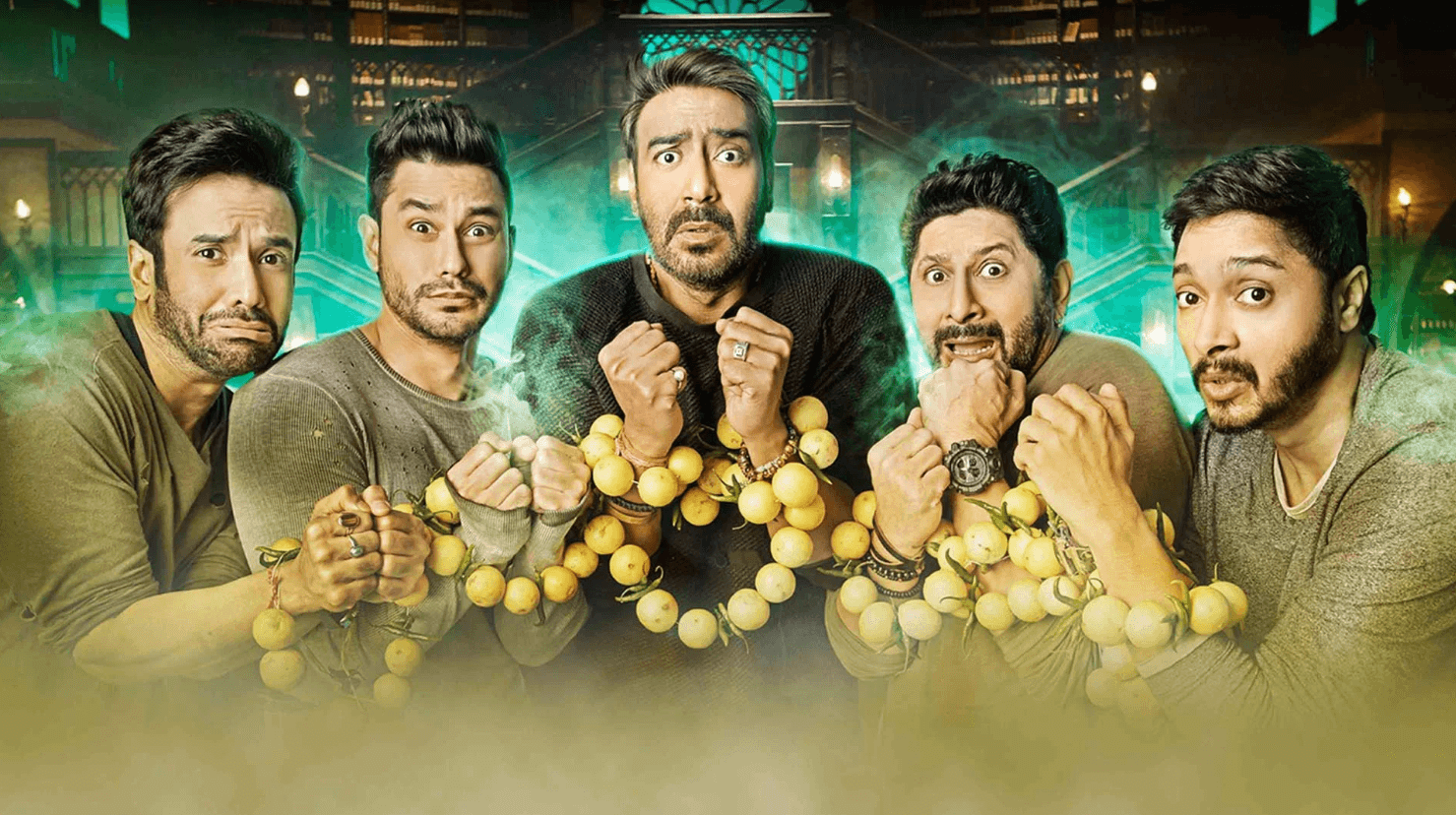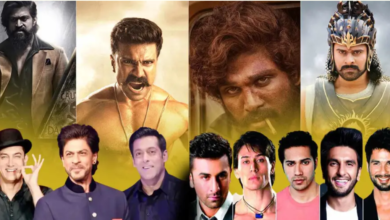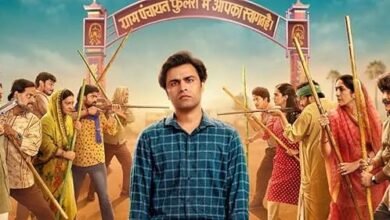The “Golmaal” franchise, created and directed by Rohit Shetty, stands as one of Bollywood’s most successful and beloved comedy series. Starting with the release of “Golmaal: Fun Unlimited” in 2006, the franchise has grown to include four installments, each packed with humor, action, and unforgettable characters. Known for its slapstick comedy, unique characters, and signature style of chaotic humor, “Golmaal” has left an indelible mark on Indian cinema, shaping the landscape of Bollywood comedy for over a decade.
This article provides an in-depth look into the origins of the franchise, character breakdowns, plot summaries of each installment, themes, impact, and the reasons why “Golmaal” continues to be a cultural phenomenon in India and beyond.
Origins and Development
The “Golmaal” franchise was inspired by the 1979 Hindi comedy “Gol Maal,” directed by Hrishikesh Mukherjee, though Rohit Shetty’s take on the concept added a new level of slapstick, high-energy action, and exaggerated humor. Produced by Shree Ashtavinayak Cine Vision Ltd., the first movie, Golmaal: Fun Unlimited, became a surprise hit at the box office and was praised for its entertaining storyline, quirky characters, and laugh-out-loud moments. Its success set the stage for a full-fledged franchise, and Shetty continued to bring the “Golmaal” crew back for sequels that only grew in popularity.
The franchise stars Ajay Devgn, Arshad Warsi, Tusshar Kapoor, and Shreyas Talpade in lead roles across its sequels, along with actors like Kareena Kapoor, Kunal Khemu, and Tabu joining the fun in later installments. Each film, though retaining the core cast, introduces new twists, storylines, and fresh characters, adding variety while maintaining continuity.
Characters
The strength of “Golmaal” lies in its memorable characters, each bringing their quirks and brand of comedy to the screen. Here’s a look at the core characters and their roles across the franchise:
| Character | Actor | Role and Characteristics |
|---|---|---|
| Gopal | Ajay Devgn | Strong but simple-minded, often the leader of the gang. |
| Madhav | Arshad Warsi | Sarcastic, clever, and frequently at odds with Gopal. |
| Lucky | Tusshar Kapoor | Mute character who communicates humorously without words. |
| Laxman | Sharman Joshi (Part 1), Shreyas Talpade (Parts 2-4) | Timid, obedient, and often a peacemaker. |
| Dabboo | Kareena Kapoor | Gopal’s love interest in Golmaal 3, strong-willed and humorous. |
| Pritam | Mithun Chakraborty | Gopal’s father in Golmaal 3, a retired goon with a good heart. |
Each character has their signature style, from Gopal’s occasional fits of rage to Lucky’s silent yet expressive antics. The dynamic between Gopal and Madhav, in particular, is one of the franchise’s highlights, with their constant bickering and rivalry forming the basis of much of the humor. Lucky, as the mute character, contributes to the comedic chaos with his exaggerated expressions and gestures, creating humor without uttering a single word. This ensemble cast is the backbone of the “Golmaal” franchise, and their individual personalities and chemistry keep audiences returning for more.
Plot Summaries
Each “Golmaal” movie introduces new situations and challenges for the characters, while keeping the humor fresh and engaging. Here’s a breakdown of each film’s storyline:
Golmaal: Fun Unlimited (2006)
The first film introduces Gopal, Madhav, Lucky, and Laxman as four friends with no money and no clear direction in life. Their lives take a turn when they devise a plan to stay at the home of a blind elderly couple, pretending to be the couple’s estranged grandson. Chaos ensues as they try to keep up the charade, leading to hilarious misunderstandings and situations. This film established the signature style of the “Golmaal” franchise, with its slapstick humor, mistaken identities, and chaotic scenes.
Golmaal Returns (2008)
In the sequel, Gopal is now married to Ekta (Kareena Kapoor), a wife who is suspicious and obsessed with soap operas. Gopal gets into trouble when he has to spend the night outside his home due to an accident, leading to a chain of lies to cover up the situation. Madhav and the others get involved, adding fuel to the fire. This installment expanded the franchise’s humor and added a more complex storyline involving misunderstandings, deception, and mistaken identities, all wrapped in a comedic plotline.
Golmaal 3 (2010)
Set in Goa, “Golmaal 3” explores the theme of family reunions and the enmity between two feuding families. Gopal, Madhav, Lucky, and Laxman find themselves in a new kind of chaotic environment, where their parents are ex-lovers. When their parents decide to reunite, the boys must learn to live under one roof. “Golmaal 3” was a major hit, blending comedy with heartfelt moments, and it was praised for its ability to add emotional depth to the usual slapstick humor.
Golmaal Again (2017)
The fourth installment takes a supernatural twist as the gang returns to an old orphanage where they grew up. They soon realize that the place is haunted, leading to an unusual mix of horror and comedy. In Golmaal Again, the introduction of the supernatural added a new layer of humor, with each character’s reactions to the ghostly encounters becoming a central comedic element. The film also revisited themes of friendship and loyalty, resonating with fans of the series.
Themes and Style
The “Golmaal” franchise, though primarily a comedy, often weaves in themes of friendship, loyalty, and family values. These recurring themes add a layer of relatability, making the characters more endearing. The franchise also maintains a strong focus on the following:
- Slapstick and Physical Comedy: Known for its over-the-top, exaggerated humor, “Golmaal” employs slapstick and physical comedy extensively, from chase sequences to action scenes where the characters get into all sorts of absurd predicaments.
- Misunderstandings and Mistaken Identities: One of the franchise’s hallmarks is its use of misunderstandings as a plot device. Each installment involves the characters getting entangled in webs of lies, mistaken identities, and chaotic situations that they must scramble to resolve.
- Strong Ensemble Cast: The chemistry among the lead actors—particularly Ajay Devgn and Arshad Warsi—forms the heart of the franchise. Their camaraderie and comic timing create memorable scenes, while the recurring cast members maintain continuity.
- Action-Infused Comedy: Rohit Shetty’s signature action style is present in the franchise, blending comedy with car chases, explosions, and stunts that make each movie visually dynamic and engaging.
- Emotional Elements: Although primarily comedic, the franchise also includes moments of emotion, particularly around themes of friendship and family. Golmaal 3 is an example where the theme of family adds a touch of warmth to the story, making it more than just a slapstick comedy.
Critical Reception and Box Office Success
Each installment of the “Golmaal” franchise has enjoyed considerable box office success, cementing its place in Bollywood history as one of the highest-grossing comedy franchises. Critics have praised the films for their humor, action, and the cast’s performances. While the humor is often broad and appeals to a wide audience, each film has its own unique appeal.
The franchise’s success lies in its formula: comedy that does not take itself too seriously. Rohit Shetty’s direction, combined with the chemistry of the cast, has resonated with Indian audiences, who embrace the movies as stress-busting entertainment. Although the films received mixed reviews from critics for their simplicity and over-the-top humor, they have a strong fan following and are beloved for their sheer entertainment value.
Cultural Impact and Legacy
The “Golmaal” franchise has had a significant impact on Bollywood, inspiring many filmmakers to explore comedy-action films with ensemble casts. Its humor, while slapstick, has become part of the mainstream Bollywood comedy genre, influencing numerous other movies and comedy shows.
Popular phrases from the franchise, such as “Aata Majhi Satakli” (Gopal’s iconic line), have become part of popular culture, and the film’s songs, comic sequences, and dialogues are often referenced in other media. The franchise also paved the way for Rohit Shetty’s rise as a director known for his distinct style of comedy-action films, and it solidified Ajay Devgn as a versatile actor capable of both serious and comedic roles.
Conclusion
The “Golmaal” series is more than just a collection of comedy films—it is a cultural phenomenon that has brought laughter and joy to millions. With its memorable characters, recurring themes of friendship and family, and the unique blend of slapstick comedy with action, “Golmaal” has left a lasting legacy in Indian cinema. It continues to resonate with audiences across generations, who find comfort in the franchise’s lighthearted humor and unforgettable characters.
As Bollywood’s longest-running comedy franchise, “Golmaal” serves as a reminder of the power of humor, camaraderie, and the universal appeal of laughter. Its success demonstrates that when it comes to comedy, sometimes, “fun unlimited” is exactly what audiences want. With rumors of a fifth installment on the horizon, fans can look forward to yet another round of laughs, chaos, and unforgettable moments from this beloved franchise.




